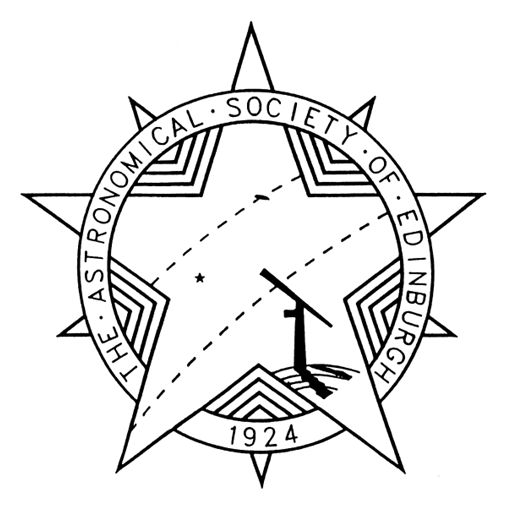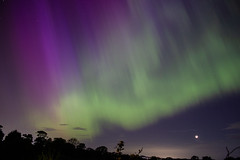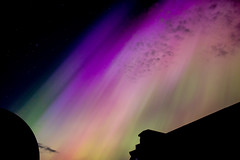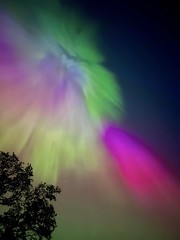Monthly Archives: April 2019
Scotland’s Sky in May, 2019
Giant world Jupiter becoming obvious in May’s twilit nights

The maps show the sky at 01:00 BST on the 1st, midnight on the 16th and 23:00 on the 31st. (Click on map to enlarge)
With its lengthening days and increasingly twilit nights, May is hardly a vintage month for stargazing from Scotland’s latitudes. Official (nautical) darkness for Edinburgh lasts for more than five hours around midnight as the month begins but dwindles to nothing by the start of June and does not return until 12 July
Edinburgh’s sunrise/sunset times change from 05:30/20:51 on the 1st to 04:37/21:45 on the 31st, while the Moon is new on the 4th, at first quarter on the 12th, full on the 18th and at last quarter on the 26th.
Our charts show Leo diving westwards as the Summer Triangle formed by Vega, Altair and Deneb is climbing in the east. After the Moon, our most obvious nighttime object is the planet Jupiter which rises in the south-east 30 minutes before our map times and reaches less than 12° high in the south before dawn. In fact, look for the Moon above-right of Jupiter on the night of the 19th and closer to the planet’s left on the 20th.
The giant world is now edging westwards against the stars of southern Ophiuchus and brightens from magnitude -2.4 to -2.6 as its distance falls from 678 million to 644 million km. The Jovian globe spans 45 arcseconds in mid-May and telescopes show that it is crossed by bands of cloud that lie parallel to its equator. The four principal moons of Jupiter are also easy targets, though sometimes one or more hide from view as they pass in front of, or behind, the disk or are eclipsed in Jupiter’s shadow.
Saturn trails almost two hours behind Jupiter but is fainter at magnitude 0.5 to 0.3. It lies in Sagittarius, below the Teaspoon asterism, where it stands above the Moon but low down in the south-south-east before dawn on the 23rd. Always an impressive sight through a telescope, though not helped by its low altitude, its disk appears 18 arcseconds wide at mid-month, circled by rings that measure 40 by 16 arcseconds.
Mercury and Venus are too deep in the morning twilight to be seen at present, though Mercury slips around the Sun’s far side on the 21st. The morning twilight also hinders views of the Eta-Aquarids meteor shower which peaks around the 6th-7th and brings swift meteors that stream from a point which hovers low in our east-south-eastern sky for two hours before sunrise.
Mars sets a few minutes before our star map times and may be hard to spot low down in our west-north-western evening sky. It stands between the horns of Taurus on the 1st and shines at magnitude 1.6 to rival the star Elnath, which lies 5° above Mars and marks the tip of the Bull’s northern horn.
Mars’ pinkish-orange hue is best appreciated through binoculars as the planet dims further to magnitude 1.8 and speeds 20° eastwards during May, crossing into Gemini at mid-month and sweeping only 0.2° north of the star cluster M35 (use binoculars) on the 19th. It recedes from 335 million to 363 million km during May but, at a mere 4 arcseconds in diameter, is too small to be of telescopic interest. Catch Mars above the slim earthlit Moon on the 7th.
NASA’s InSight lander used its sensitive French-built seismometer to detect its first likely marsquake on 6 April. The faint vibrations are now being studied for clues as to Mars’ interior. Another instrument, a German heat probe designed to drill up to five metres into the surface, seems to have encountered a rock and is currently stalled well short of its target depth.
The Plough looms directly overhead at nightfall and stands high in the west by our map times. If we extend a curving line along its handle, we reach the prominent star Arcturus which, at magnitude -0.05, is the brightest of all the stars in the sky’s northern hemisphere and, after Sirius, the second brightest (nighttime) star visible from Scotland, although both Vega and Capella come close.
Classed officially as a red giant star, though more yellow-orange in hue, Arcturus is slightly more massive than our Sun and perhaps 50% older. As such, it has depleted the hydrogen used to power its core through nuclear fusion, progressed to fusing helium instead and inflated to 25 times the Sun’s radius and 170 times its luminosity. Eventually, after shedding its outer layers, it will settle down as a dim white dwarf star comparable in size to the Earth.
At present, though, we admire it as the leading star in the constellation of Bootes which has been likened to a pale imitation of Orion or even an ice-cream cone. Bootes takes its name from the Greek for herdsman or plowman, apparently in relation to the seven stars of the Plough which were also known as the “Seven Oxen” in early times.
Arcturus’ own name comes from the Greek for “guardian of the bear”, another reference to its role in following Ursa Major across the sky. In truth, it is something of a temporary guardian since it is rushing past our solar system at 122 km per second at a distance of 36.7 light years and will likely fade from naked-eye view within (only) half a million years as it tracks south-westwards in the direction of Virgo and the bright star Spica.
It is in the north of Virgo, and roughly coincident with the “D” of the label for Denebola on our south star map, that we find the galaxy M87, the owner of the supermassive black hole whose image was released a few weeks ago. M87 is 54 million light years away and visible as a smudge in small telescopes.
Diary for 2019 May
Times are BST
5th 00h New moon
6th 15h Peak of Eta-Aquarids meteor shower
6th 23h Moon 2.3° N of Aldebaran
8th 01h Moon 3° S of Mars
11th 03h Moon 0.3° N of Praesepe
12th 02h First quarter
12th 16h Moon 3° N of Regulus
18th 22h Full moon
19th 18h Mars 0.2° N of star cluster M35 in Gemini
20th 18h Moon 1.7° N of Jupiter
21st 14h Mercury in superior conjunction
22nd 23h Moon 0.5° S of Saturn
26th 18h Last quarter
Alan Pickup



